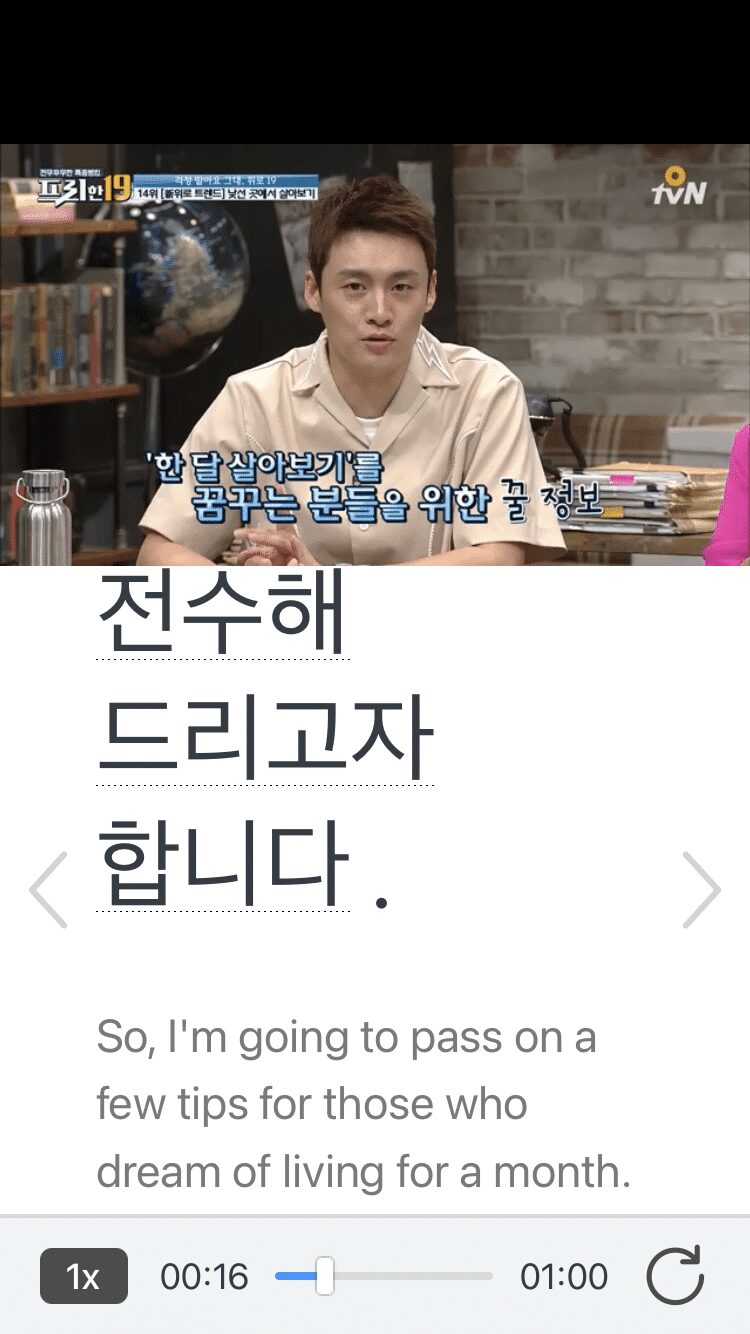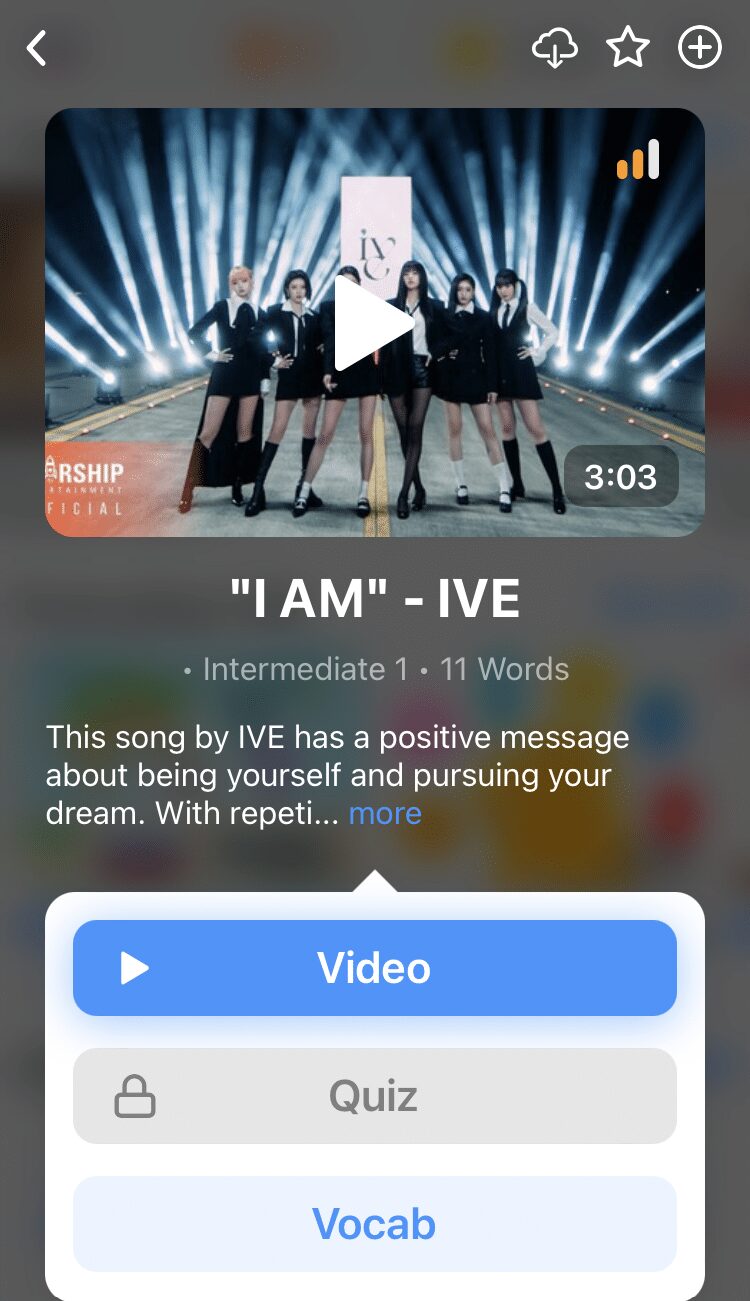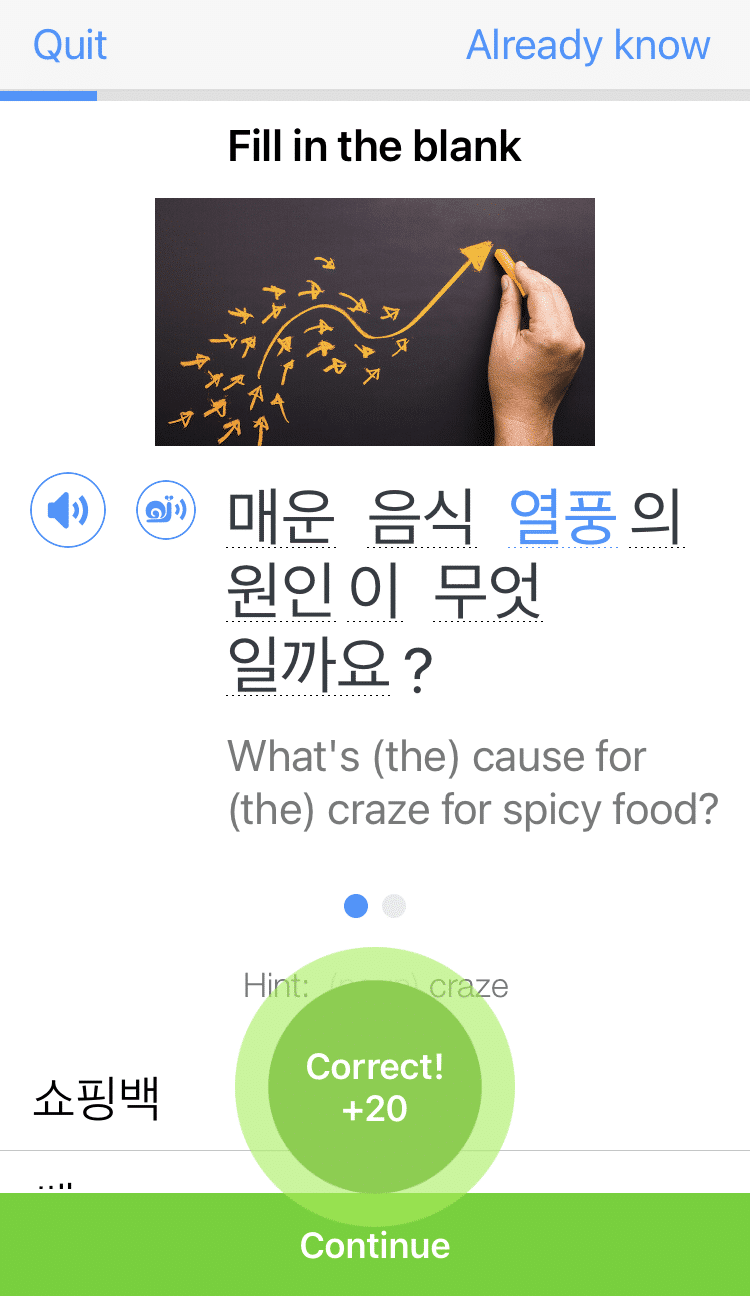Korean Pronunciation: How to Sound out Consonants, Vowels and Batchim

When learning a new language, pronunciation is a biggie, so let’s talk about everything to do with mastering Korean pronunciation.
From sounding out the Korean alphabet to pronouncing diphthongs, explore the post with audio below to nail your pronunciation in Korean.
Download: This blog post is available as a convenient and portable PDF that you can take anywhere. Click here to get a copy. (Download)
How to Pronounce the Korean Alphabet
In Korean, consonants don’t generate a sound on their own and must always be paired with a vowel. You can see some examples of basic Korean syllables below.
| Consonant | Sound | Syllable | Pronunciation |
|---|---|---|---|
| ㄱ | g | 가 | ga |
| ㄴ | n | 나 | na |
| ㄷ | d | 다 | da |
| ㄹ | r | 라 | ra |
| ㅁ | m | 마 | ma |
| ㅂ | b | 바 | ba |
| ㅅ | s | 사 | sa |
| ㅇ | silent | 아 | ah |
| ㅈ | j | 자 | ja |
| ㅊ | ch | 차 | cha |
| ㅋ | k | 카 | ka |
| ㅌ | t | 타 | ta |
| ㅍ | p | 파 | pa |
| ㅎ | h | 하 | ha |
The sounds for the basic Korean vowels are a lot more straightforward.
| Vowel | Pronunciation |
|---|---|
| ㅏ | ah |
| ㅑ | ya |
| ㅓ | eo |
| ㅕ | yeo |
| ㅗ | o |
| ㅛ | yo |
| ㅜ | u |
| ㅠ | yu |
| ㅡ | eu |
| ㅣ | i/ee |
How to Pronounce Korean Consonants
Korean Aspirated Consonants
| Unaspirated Consonants | Pronunciation | Aspirated Consonants | Pronunciation |
|---|---|---|---|
| ㄱ | g | ㅋ | k |
| ㄷ | d | ㅌ | t |
| ㅂ | b | ㅍ | p |
| ㅈ | j | ㅊ | ch |
There are four main aspirated consonants: ㅋ, ㅌ,ㅍ and ㅊ. They each have an equivalent unaspirated (or, plain) form: ㄱ,ㄷ,ㅂ and ㅈ. If you carefully look at aspirated consonants, like ㅋ and its unaspirated form ㄱ, you’ll note that the aspirated ones have an extra stroke in them.
This represents the puff of air released from your mouth as you say them. You’ll notice that words that begin with aspirated consonants are often (but not always) loan words.
ㄱ and ㅋ sounds
ㄱ sounds like the English “G” (in “garden”) and ㅋ sounds like “K” (in “king”).
고양이 (go-yang-i) — cat
강아지 (gang-a-ji) — puppy
쿠키 (ku-ki) — cookie
카메라 (ka-me-ra) — camera
ㄷ and ㅌ sounds
ㄷ sounds like the English “D” (in “desk”)” and ㅌ sounds like “T” (in “table”).
도서관 (do-seo-gwan) — library
대학교 (dae-hak-gyo) — university
투표 (tu-pyo) — vote
토마토 (to-ma-to) — tomato
ㅂ and ㅍ sounds
ㅂ sounds like the English “B” (in “bat”) and ㅍ sounds like “P” (in “pat”).
버섯 (beo-seot) — mushroom
바나나 (ba-na-na) — banana
평화 (pyeong-hwa) — peace
피아노 (pi-a-no) — piano
ㅈ and ㅊ sounds
ㅈ sounds like the English “J” (in “jeans’) and ㅊ sounds like “CH” (in “cherry”).
잠자리 (jam-ja-ri) — dragonfly
자전거 (ja-jeon-geo) — bicycle
차 (cha) — tea
초콜릿 (cho-kol-lit) — chocolate
Let’s take a look at how to master these.
- Learn to listen for the sound by producing it. The first step is to actually produce these sounds yourself. Do a lot of repetitions and keep on practicing. Enunciate and exaggerate. Listen, and make some adjustments.
- Practice unaspirated and aspirated consonants together. When you practice these sounds, you need to practice them in pairs. Pronounce the aspirated one, followed by the unaspirated version. This will allow you to hear the difference between them.
- Exaggerate the puff of air from your mouth. This will make the subtle ones more obvious and therefore allow you to hear the differences more clearly. Even better, put a candle in front of your mouth and notice when the flame flickers as you pronounce it.
- Give aspirated consonants higher pitches. Because of the air that goes out of your mouth, you might notice that aspirated consonants are ever so slightly higher in pitch compared to the unaspirated ones. The expelled air also makes them naturally sound louder.
You might be thinking, “I can’t hear the difference between the two.” That’s normal! Practicing will lay the groundwork for your ears to detect the little things that layer the Korean language.
Check out this video that can help you with these types of consonants.
Korean Double Consonants
| Single Consonants | Pronunciation | Double Consonants | Pronunciation |
|---|---|---|---|
| ㄱ | g | ㄲ | kk |
| ㄷ | d | ㄸ | dd/tt |
| ㅂ | b | ㅃ | pp |
| ㅅ | s | ㅆ | ss |
| ㅈ | j | ㅉ | jj |
There are five double consonants: ㄲ, ㄸ, ㅃ, ㅆ and ㅉ. They already look very familiar to you because they’re “twice” the consonants ㄱ,ㄷ,ㅂ,ㅅ and ㅈ respectively. As double consonants, these are pronounced with a little more stress compared to the plain unaspirated ones.
If aspirated consonants are a bit higher and louder than non-aspirated ones, the double consonants produce tense, closed sounds by closing the airway and tightening the tongue. Try making the double consonants more tense.
As we did before, let’s compare the sounds together.
ㄱ and ㄲ sounds
ㄲ sounds similar to “ski” and “sky” and becomes “KK.”
가방 (ga-bang) — bag
과일 (gwa-il) — fruit
꼬리 (kko-ri) — tail
끝 (kkeut) — end
ㄷand ㄸ sounds
ㄸ sounds similar to “star” and “stay.” As you can see with the last two words, sometimes it sounds more like a tense “DD” and sometimes more like a “TT.”
다리 (da-ri) — leg
두부 (du-bu) — tofu
딸기 (ddal-gi) — strawberry
뚜껑 (ttu-kkeong) — lid
ㅂand ㅃ sounds
ㅃ sounds like the “P” in “spectrum” and “spy” to become “PP.”
바다 (ba-da) — sea, ocean
버스 (beo-seu) — bus
뼈 (ppyeo) — bone
뿌리 (ppu-ri) — root
ㅅ and ㅆ sounds
ㅆ is similar to “see” and “song” but try to emphasize it and make it stronger to sound like “SS.”
선생님 (seon-saeng-nim) — teacher
손 (son) — hand
쌀 (ssal) — rice (uncooked)
쓰다 (sseu-da) — to write, to use (infinitive)
ㅈ and ㅉ sounds
ㅉ sounds closest to the “CH” in “chase” and “chop” but combined more with a “J.” The result is a “JJ” sound that you say through your front teeth.
준비 (jun-bi) — preparation
장난감 (jang-nan-gam) — toy
쪽지 (jjok-ji) — note, memo
쪼끔 (jjo-kkeum) — a little bit
It can be tough differentiating the two sounds, especially for beginners. But again, in order for you to recognize them, you should be producing them yourself.
Check out this video for more helpful information on the double consonants.
Let repetition be your mantra. Just as you practiced unaspirated consonants with their aspirated siblings, you need to practice unaspirated consonants with their doubles. This will ensure that you get to hear how one is slightly different from the other.
Go through these sequential drills:
- Unaspirated, to aspirated, to double (ㄱ – ㅋ – ㄲ)
- Aspirated to double (ㅋ–ㄲ )
- Double to unaspirated (ㄲ–ㄱ)
How to Pronounce the Korean Batchim
Korean syllables are usually composed of one consonant and a vowel. Sometimes though, there’s an additional consonant. The final consonant, that’s usually found at the bottom of a syllabic block, is called the Batchim.
The tricky thing about it is, some consonants change their sound when they’re in this position, also depending on the letter that follows. This is because native speakers of all languages try to make their lives easier. They instinctively change the sound of syllables, depending on what rolls off their tongues more smoothly.
The 받침 (Batchim) position is often the site of these instinctive sound changes. Try thinking of it as this: What is the easiest to pronounce and therefore most logical next sound?
Letter ㅇ
One example is the consonant ㅇ (ieung). It’s silent when found at the beginning of the word. For example,
아기 (a-gi) — baby
연필 (yeon-pil) — pencil
Because it’s silent, if there’s a consonant in the preceding syllable, then the consonant sound gets passed to the next syllable after the ㅇ. For example, let’s take the word 먹다 (to eat). When it’s put in the casual present simple form, it’s written like this.
Spelled: 먹어 (meo-geoh) — eat
Pronounced: 머거 (meo-geoh) — eat
But when it’s at the Batchim position, theㅇ is pronounced as “NG” like. For example,
사랑 (sa-rang) — love
은행 (eun-heang) — bank
Letter ㄹ
When at the beginning of a syllable, the consonant ㄹ (rieul) is usually pronounced as the Korean letter “R.” However, it often ends up being somewhere between an “R” and “L” sound. For example,
라면 (ra-myeon) — ramen
레몬 (le-mon) — lemon
리본 (ri-bon) — ribbon
As we said above, when the ㄹ is in the Batchim position and followed by a silent ㅇ in the next syllable, the sound just gets passed on and it’s still an “R” sound. For example,
달아요 (da-ra-yo) — It’s sweet.
걸어요 (geo-reo-yo) — I walk.
When it’s in the Batchim position, it’s usually pronounced like the letter “L.” This is the second most common sound for this letter. For example,
칼 (kal) — knife
한글 (Han-gul) — Hangul
갈비 (gal-bi) — ribs
There are a couple of other situations in which it’s pronounced as an “L” but longer and slightly extended. The first situation is if it’s followed by another ㄹ. We also see this when the Batchim is an ㄴ followed by a ㄹ in the next syllable.
달라요 (dal-la-yo) — It’s different.
한라산 (Hal-la-san) — Halla mountain
There is one more instance that is less common and more challenging to remember and that’s when the ㄹ is pronounced more like an “N.” When the ㄱ, ㅁ or ㅇ are in the Batchim position and the ㄹ is in the next syllable, the ㄹ has an “N” sound. For example,
능력 (neung-nyeok) — ability
음료수 (eum-nyo-su) — a drink
정류장 (jeung-nyu-jang) — stop/station
Letter ㅅ
Here’s another sound that changes depending on where it’s positioned. Normally, the English equivalent for this letter would be pronounced with an “S” sound. For example,
사자 (sa-ja) — a lion
선물 (seon-mul) — gift
When it comes to the Batchim, the unaspirated sound is often the preferred pronunciation. Unaspirated and simple sounds are often preferred at the Batchim position because they connect well to the next incoming syllables or sounds.
That means that if it’s in a Batchim position at the end of a word or is followed by another consonant in the next syllable, the ㅅ is pronounced more like a “D” or “T” sound, and more like an unaspirated ㄷ. For example,
씨앗 (sshi-at) — a seed
잣 (jat) — a pine nut
했다 (hett-da) — … did (“do” past tense, infinitive form)
Letters ㅈ and ㅊ
Just like ㅅ when it’s in the Batchim position, the letters ㅈ and ㅊ will also be pronounced with an unaspirated “D” or “T” sound. For example,
낮 (nat) — daytime
꽃 (gott) — a flower
빛 (beet) — light
Letters ㄱ, ㅋ and ㄲ
Like with the last few letters, at least in the Batchim position, ㄱ, ㅋ and ㄲ will all sound the same—like an unaspirated letter “K.”
There are some instances in which the ㄱ is pronounced as an “NG” sound. This once again depends on the letters that follow. This is usually the case if ㄱ is followed by an ㄴ or ㄹ in the following syllable. For example,
작년 (jang-nyeon) — last year
독립 (dong-nip) — independence
To learn more about this interesting position, check out this video explaining seven basic Batchim rules!
How to Pronounce Korean Vowels
Basic Korean Vowels
There are just 10 standard vowels in Korean, and they can either be horizontally or vertically oriented.
The three that typically cause the most trouble for English speakers though are ㅡ (eu), ㅓ (eo) and ㅕ (yeo) because they don’t have natural equivalent vowel sounds in English.
The best way to combat this is to simply do extra practice drills. The key to their pronunciation is hitting the right tongue and mouth positions so you can produce the sounds efficiently.
Korean Vowel Combinations
| Vowel diphthongs | Pronunciation |
|---|---|
| ㅐ | eh |
| ㅔ | eh |
| ㅒ | yeh |
| ㅖ | yeh |
| ㅘ | wah |
| ㅙ | weh |
| ㅚ | weh |
| ㅝ | woh |
| ㅞ | weh |
| ㅟ | wee |
| ㅢ. | ui |
There are 11 Korean diphthongs (also known as vowel combinations). However, there’s not much of a difference betweenㅐ and ㅔ (both pronounced “eh”) and between ㅒ and ㅖ (both pronounced “yeh”). To make things even easier, ㅚ, ㅙ and ㅞ are all pronounced as “weh.”
So from 11 diphthongs, you only have seven diphthong pronunciations to memorize.
When it comes to writing, don’t worry too much about differentiating between these. The context will be more than enough to elucidate their differences, even though they have the same sound. Not much is lost here.
Here are some examples of the sounds above.
배 (bae) — pear
세계 (se-gye) — world
와인 (wa-in) — wine
외국 (weh-guk) — foreign country
원하다 (won-ha-da) — to want or to desire
의자 (ui-ja) — chair
Just as you understand the difference between “see” and “sea” in sentences like “I went to the sea” and “I went to see a movie,” you’ll also be able to understand what is meant according to context.
Here’s a video explaining these compound vowels.
Pairing Vowels with Consonants in Korean
When you drill the vowels, combine them with the consonants in the order they appear. For example, for the vowel ㅏ, you sequence through a series like 가, 나, 다, 라, 마, 바 and so on. Repeat each syllable several times so your mouth can get a feel for the context of the vowel.
Then, you can expand your ㅏ practice by drilling through more complex syllables like 각, 낙, 닥 and 락. Well, you get the idea. And that’s just for one vowel! Once you’re done with that vowel you can move on to the next.
Doing this will get you hundreds of repetitions for the different combinations of sounds in Korean. Your mouth muscles will definitely get a workout.
What About Romanization?
As a beginner Korean learner, you’ve surely been introduced to romanized forms of Hangul.
But don’t be fooled—being able to read romanization doesn’t mean you’re able to read Korean, or even pronounce words correctly. Many linguists agree that using romanizations can be detrimental to your progress and aren’t good for the long run. But why?
- They don’t exist in the real world. When you get into authentic Korean situations—like interacting with native speakers, getting a text message from a Korean friend, watching the news or trying to find your way around Korean streets—there are no romanizations to come to your aid.
- They can be misleading or ambiguous. Romanizations simply aren’t Korean. Therefore, no matter how hard transcribers try to spell the words in English, the sounds won’t be an accurate representation of how native speakers pronounce them. They also tend to be extremely inconsistent.
- There’s no direct one-on-one correspondence between English letters and the sounds in Korean. What would you write when the sound is supposed to be something that’s in between a “B” and a “P”? Or between a “D” and a “T”? You’d have to approximate—which is rarely accurate.
Plus, learning Hangul is way easier than you think. And once you do, Korean will be much easier and your skills will almost instantly improve.
Tips for Mastering Korean Pronunciation
Treat Each Syllable Equally
Korean is a syllable-timed language. This means equal time is spent pronouncing every syllable. Each syllable for the word 사랑해 (sa-rang-hae), for example, will get equal pronunciation time.
English speakers have a hard time with this because English is stress-timed—meaning some syllables are naturally longer and louder, while others are scarcely heard or pronounced.
However, the first syllables of Korean words are usually slightly stressed, so this is where you might find a mild rise in pitch. But again, this is just a slight rise in tone, nowhere near the pronounced jumps and dips of English sentences.
Beginners who apply the tonal patterns of their native tongues into Korean by using stress—such as in the middle or at the beginning of words—usually end up sounding unnatural to native Korean speakers.
Draw Out the Ends of Your Sentences
There’s another way English speakers can drastically improve how they sound in Korean—by lengthening or drawing out the ends of their sentences.
I know this goes against everything you’re used to because English sentences trail off at the end. They become very weak or are cut off abruptly.
But that memorable tonality that you hear in Korean takes place at the end of sentences. If you lengthen the last syllable and deliver it a little louder, you get this effect.
Practice by humming along to some dialogue in a Korean movie. You don’t need to say the actual words. Just hum along and focus on how those sentences terminate. You’ll get the hang of it in no time!
Listen, Don’t Write
Sure, you’ll want to learn how to write Hangul, but this is a post on pronunciation. You want to make sure that you’re actually polishing the right skill.
Sometimes looking at the Hangul characters can be too intimidating. Even worse, you can lose your focus and instead busy yourself with memorizing how the lines and squares are assembled.
Why don’t you close your eyes instead? This is how you train your ears to pick up on the nuances and appreciate the texture of Korean pronunciations.
Speak Korean Like a Baby
Your mouth and tongue are a system of muscles that need to work together and move in certain ways to produce specific sounds.
A language is a specific set of sounds produced by positioning the tongue in certain areas of the mouth. And, like a muscle, you need to get them used to hitting those vocal positions. This only comes with practice—actually enunciating.
It’s obvious that if you want to learn how to swim you need to get in the water. If you want to learn how to speak Korean, you need to speak Korean (perhaps terribly at first).
Act Out When Speaking
Moving around enlivens your practice sessions.
Don’t just sit there and drone through your words and sentences. Stand up and role play. Move around. Act out the lines. Imagine you’re actually talking to someone. It gives context to your utterances.
Motion is memory-friendly. It not only provides context and authenticity to your pronunciations, but it also makes things stick in your brain.
Use Various Resources to Practice
There is a wealth of resources out there that can help you as well. One great resource is the book “How To Sound Like A Native Korean Speaker” by Talk To Me in Korean.
Another one that will help you by hearing native speakers talk is the language learning program FluentU.
FluentU takes authentic videos—like music videos, movie trailers, news and inspiring talks—and turns them into personalized language learning lessons.
You can try FluentU for free for 2 weeks. Check out the website or download the iOS app or Android app.
P.S. Click here to take advantage of our current sale! (Expires at the end of this month.)
Time to do those pronunciation drills that we talked about! They’ll be all for nothing if you don’t get to it. Like I said before, there are no shortcuts when it comes to pronunciation.
So get those lips moving!
Download: This blog post is available as a convenient and portable PDF that you can take anywhere. Click here to get a copy. (Download)
And One More Thing...
If you enjoyed this post, you're already halfway to having the time of your life learning Korean with FluentU!
FluentU makes it possible to learn with K-pop videos, funny commercials, entertaining web series and more. Just a quick look will give you an idea of the variety of FluentU videos on offer:

FluentU really takes the grunt work out of learning languages, leaving you with nothing but engaging, effective and efficient learning. It's already hand-picked the best videos for you (which are organized by level and topic), so all you have to do is simply choose any video that strikes your fancy to get started.
Each word in the interactive captions comes with a definition, audio, image, example sentences and more.

Access a complete interactive transcript of every video under the Dialogue tab, and easily review words and phrases from the video under Vocab.

You can use FluentU’s unique Quiz Mode to learn the vocabulary and phrases from the video through fun questions.

FluentU keeps track of what you're learning, and tells you exactly when it's time for review, giving you a 100% personalized experience.
Review sessions use video context to help embed the words in your memory.
Start using the FluentU website on your computer or tablet or, better yet, download the FluentU app from the iTunes or Google Play store. Click here to take advantage of our current sale! (Expires at the end of this month.)








